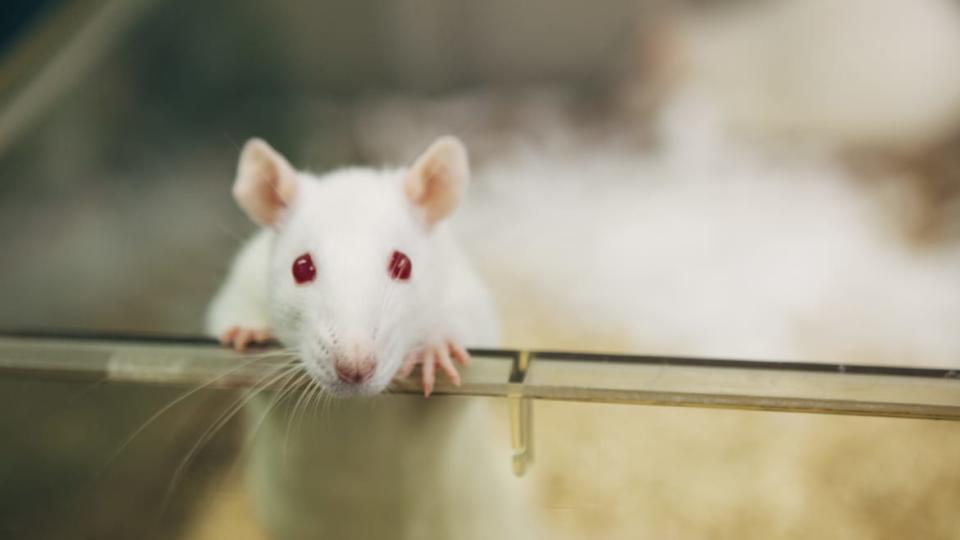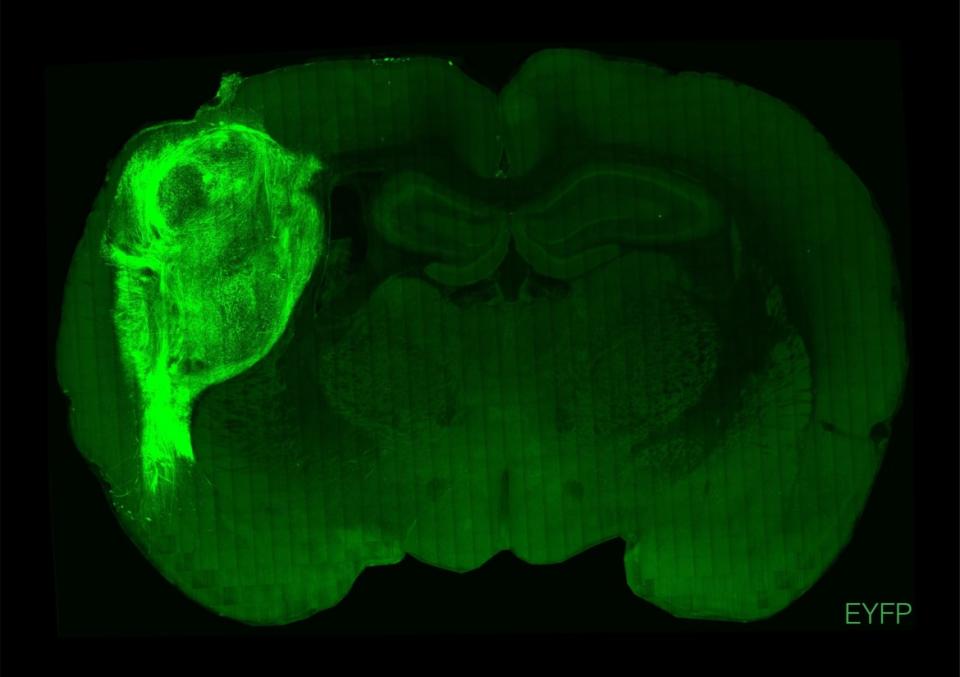Mindbending Experiment Fused Rat Brains With Human Neurons

By transplanting a clump of human brain cells into newborn rats, Stanford University scientists demonstrated that neurons from different species can form connections with one another in a single organism. Their finding lays out a new laboratory model for neuroscience, opening doors for research that seeks to understand the human brain and the underpinnings of neurological conditions.
Currently, when researchers wish to experiment on human brain cells, they create organoids, which are small, self-assembling groups of stem cells that come from adult donors. Brain organoids can grow on petri dishes and then form into three-dimensional aggregates of cells and tissue that exhibit some (though not all) stages of normal development. They can be used to study some key functions of an organ, but there are limitations; the neurons in brain organoids, for example, don’t grow as large or make as many connections as those in a human brain do, even when given ample time to develop.
Since 2015, Stanford neuroscientist Sergiu Pasca has been working on xenotransplanting these organoids into rats to study psychiatric diseases and other neurological disorders. He’s finally hit on a breakthrough, and the results from his successful experiment were published on Wednesday in the journal Nature.

A transplanted human organoid labeled with a fluorescent protein in a section of the rat brain.
“Psychiatric disorders are a huge burden to society,” Pasca said during a press briefing. “I believe we have a moral imperative to find better models to study these conditions.”
Pasca isn’t ignorant of the larger ethical implications of mashing up human cells with animal tissues. “The more human these models are becoming, the more uncomfortable we feel about some of these conditions,” he added.
In the study, Pasca and his team transplanted human-derived brain organoids into the cerebral cortices of over 80 newborn rats and let the rats develop normally over the course of the next eight months. They found that the human neurons grew to take up a third of a hemisphere in the rat’s brains—each neuron was about six times larger than it would have been if grown in a petri dish, like a typical organoid. The transplanted neurons also grew more connections and had a greater concentration of negative ions within their membranes, more closely mimicking the human brain compared to petri dish organoids.
Still, the transplanted organoids exhibited some key differences to naturally developing human brains—they didn’t develop layers as cells in the cerebral cortex normally do, and the stem cells only grew into some types of brain cells, not all.
Scientists Revive Cells in Brains From Slaughtered Pigs
When the researchers tickled the rats’ whiskers near the transplantation site and recorded brain activity, they found that the movement stimulated the human neurons. They also found that when they tied human neuron activity to a blue light, transplanted rats could learn to distinguish between blue and red light, when normal rats could not. Together, these findings suggest that the human cells became integrated in the rats’ neural circuitry, Pasca said.
Then, to test how these xenotransplanted rats could be used to study human diseases, Pasca and his team created brain organoids derived from the cells of three people with Timothy syndrome, a genetic disorder that can cause developmental delays. In petri dishes, these two sets of neurons would look identical, but in the rats where they could develop further, the Timothy syndrome neurons were shorter and branched abnormally, compared to unaffected neurons.
The finding that the transplanted neurons can influence the rat’s behavior represents a foray into “uncharted territory,” developmental biology researchers J. Gray Camp and Barbara Treutlein wrote in an accompanying commentary. Camp and Treutlein, who were not involved in the research, added that the findings raise ethical questions of “whether an organoid can have consciousness and moral status.”
Their trepidation is warranted. As research into organoids develops further, these are questions that scientists and bioethicists will have to answer together, Pasca said.
“We're going to have to think very carefully together, what are the models and how far we want to go,” he added.
Got a tip? Send it to The Daily Beast here
Get the Daily Beast's biggest scoops and scandals delivered right to your inbox. Sign up now.
Stay informed and gain unlimited access to the Daily Beast's unmatched reporting. Subscribe now.

 Yahoo News
Yahoo News 